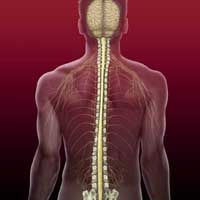Article
Spinal Cord Injury Patients Could See Nerve Regeneration
Author(s):
Using biomaterial scaffold in a spinal cord injury promotes nerve regeneration, according to findings published in the journal Tissue Engineering, Part A.

Using biomaterial scaffold in a spinal cord injury promotes nerve regeneration, according to findings published in the journal Tissue Engineering, Part A.
Researchers from the Mayo Clinic in Rochester, Minnesota used mice models of spinal cord injury in order to demonstrate full transections of spinal cord injury animals. However, the regeneration that was achieved was not sufficient enough for full recovery, the researchers noted.
The investigators made attempts to increase regeneration in the mice models at different points in the reconstruction process — 1, 2, 3, 4, and 8 weeks. After each point in the thoracic spinal cord transaction, no differences were found in the variables the scientists measured, including collagen scarring, cyst formation, astrocyte reactivity, myelin debris, of chrondroitin sulfate proteoglycan. The animal models did, however, demonstrate significantly reduced barriers to regeneration and increased activated macrophages and microglia when compared to animals with transaction injuries only. The researchers wrote that the distinction between the two animal groups was independent of the Schwann cell transplantation.
The tissue reaction was beneficial in the short term, the researchers wrote, but there were observed side effects. Chronic fibrotic host response resulted in scaffolds surrounded by collagen at the 8 week point.
“In their study of spinal cord transaction injury in rats, Hakim et al discovered that bare scaffold implantation — but not implantation of scaffold plus Schwann cells – temporarily enabled a ‘regeneration permissive’ environment, in which scarring of the spinal cord was forestalled,” Peter C. Johnson, MD, the Vice President of Research and Development and Medical Affairs, Vancive Medical Technologies and President and CEO, Scintellix, LLC in Raleigh, North Carolina, explained in a press release. “While scaffold fibrosis ultimately ensued, the notion that proper scaffold design alone could provide sufficient time for axonal growth across spinal cord gaps has reemerged as an interesting target of study.”
The authors said that the results of the study indicate that an appropriate biomaterial scaffold improves the environment for regeneration. The team suggested that future research center on targeting the host fibrotic response, which could allow increased axonal regeneration and increased functional recovery.




